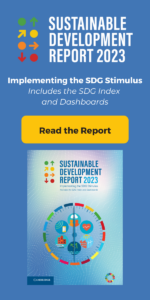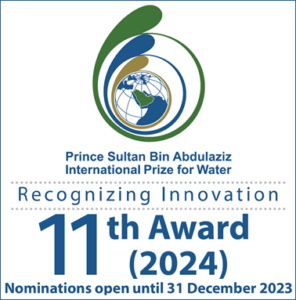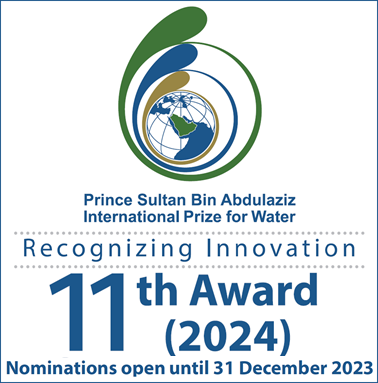Accelerating transformative partnerships through incubators
We need to radically speed and shake things up to meet the 2030 deadline. “Incubators for transformative partnerships” could be a critical tool to fast-track action on the SDGs
Economic development — Global

Multi-stakeholder partnerships can be effective in promoting the collaborations necessary to implement the transformations to achieve the Sustainable Development Goals (SDGs). However, by themselves they may not be enough to produce the structural changes we need in time. We need ambition combined with spaces to connect and learn, to ensure that collective efforts do not break down into silos, and that partnerships are effective for enabling change. Below we explore five characteristics that can accelerate the ‘next generation’ of collaborative practices.
Based on our experience, the following five ingredients increase the transformative potential of multi-stakeholder partnerships:
1. They link to public policies
While the purpose to which the partnership aims to contribute is defined among the partners, it should aim to develop a public policy connected with the SDGs. Ideally, the partnership includes a responsible public administration.
2. They address intractable problems
Transformative multi-stakeholder partnerships address ‘wicked problems’ that do not have a defined solution, are affected by high levels of uncertainty, and cannot be addressed by a single organization or specific policy. The course of action is usually to improve the situation rather than to solve it.
3. They articulate the aspirations of a diverse set of partners for transformative change
The collaborative value created in the initial stages of a partnership is generally based on philanthropic or transactional approaches. Austin and Seitanidi (2012) identified several critical factors (such as the level of commitment of the partners, the scope of their activities, trust, and the generation of synergistic value) for a partnership to evolve, or even start in a transformative state. A wide diversity of participants is also essential to maximize the amount of resources, ideas, and experiences that interact in a partnership.
4. They affect singular points of a system
Participants working in specific niche areas within a system have opportunities, through partnerships, to scale innovations from prototypes to mass production, exerting influence over the conditions in which the system operates.
5. They include an enabling facilitator
Creating a successful collaboration of disparate partners can be challenging. Successful partnerships often include a facilitator (normally performed by an individual or organization). The facilitator can help to evaluate incentives, create consensus, establish a distributed governance, and so on. In short, a facilitator generates a comfortable space for all the partners.
Connecting partnerships
Some authors point out that partnerships with a transformative vocation should not just be created ‘spontaneously’ through ‘bottom-up’ processes, since these can be hampered by lack of ambition, short-termism, insufficient coordination mechanisms, or misaligned incentives. In addition, initiating a partnership takes energy and resources, and sustaining the commitment of multiple actors in the medium term is complex (see, for example, ‘Transnational multistakeholder partnerships for sustainable development: conditions for success’).
So, in our experience, there is a need for intermediary spaces that connect partnerships aligned around common transformative processes that combine both bottom-up and top-down approaches. The initiative El Día Después (The Day After) is an example of such a space. It is promoted by the Sustainable Development Solutions Network Spain (REDS), the Innovation and Technology for Development Centre at Universidad Politécnica de Madrid, the Barcelona Institute for Global Health, and the energy company Iberdrola.
The Day After launched in March 2020 to provide an SDG-based response to the crisis triggered by COVID-19 in Spain. It creates spaces for connecting, learning, generating shared meaning, and incubating innovative projects. It does this through the stable and deep collaboration of a large number of public institutions, private companies, civil-society organizations, and academic entities. Connecting the partner networks of multiple organizations and designing from the priorities of these networks leads to greater efficiency. It means participants can take advantage of joint learning, and that partnerships can focus on activities with the highest potential for systemic change.
Incubators for transformative partnerships
The Day After initiative therefore inspired the notion of an incubator for transformative partnerships, similar to an entrepreneurship incubator. This would be a multi-actor organizational vehicle aimed at connecting and accelerating partnerships, facilitating the incorporation of systemic approaches and practices, and cross-learning between initiatives. Below we consider how such incubators might compare with transformative partnerships through their life cycle.
In the early stages of defining their scope, transformative partnerships dedicate collaborative energy to solving complex problems. Their focus is on concrete results. Incubators, however, orient their action towards systemic change. Both collaborative vehicles rely on a ‘challenge owner approach’, a demand-led innovation strategy that places public policy at the center of the innovation process. Partnerships develop through a facilitation function (a person or institution) to promote homogeneity and conditions of symmetry among the partners. For incubators, this function is equally developed but is performed by all the incubator drivers.
When transformative partnerships begin their public activity, there is usually a tension between flexibility and formalization, often leading to explicit regulations to facilitate implementation. In incubators, however, there is more of a trend towards flexibility, with an emphasis on trust and shared vision. In both cases, operations are conceived as a continuous design process. Partnerships tend to place more emphasis on planning and monitoring, whereas incubators focus more on aligning a vision. When it comes to generating value, partnerships orient towards execution, utilizing the specific capacities of the partners, while incubators lean more towards a ‘portfolio approach’, integrating learning and emerging opportunities.
Consequently, partnerships and incubators are complementary instruments. Notably, partnerships aimed at solving specific problems can amplify their transformative potential by connecting public policy and its most relevant actors within an incubator. In addition, by sharing experiences with other partnerships through an incubator, efficiency and impact increase. This reduces the learning curve, strengthens trust between partners, accelerates escalation processes, and creates a common roadmap to tackle more complex problems. Thus, the notion of a ‘convening incubator for transformative partnerships’ can be an instrument with huge potential for implementing Agenda 2030 through stable and complex interaction between public, private, social, and scientific actors.







